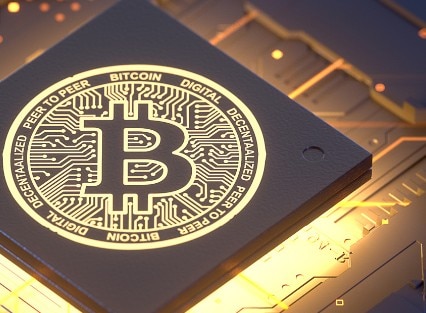Crypto, CBDCs and 21st Century Cash
We live in a digital age. How we communicate, shop, entertain ourselves, take care of our health and order groceries, all look significantly different than how we would have done it just 20 years ago. Banking and finance is also changing. And so is money.
We already have digital money – trillions move every day, electronically. But are we on the cusp of Digital Money 2.0? Not the account-based electronic money that's been around for the past several decades, but a new type of token-based digital money. Tokenization, often via blockchain, is the basis of cryptocurrencies, stablecoins, and many proposed central bank digital currencies (CBDCs).
While much attention has focused on Bitcoin in recent months, the ongoing experiments, pilots, and policy work around CBDCs could be equally if not more significant for the world of money. Central banks around the globe are warming up to CBDCs, triggered by Big Tech, and their ambitions to build alternative payment rails to existing card and bank-based payment systems with tokenized money, as in the case of the Facebook-backed Diem project.
China is currently well ahead of major peers in developing a CBDC (which they call a Digital Currency Electronic Payment, or DCEP) and is already at the point of extensive pilot testing. Given the country's sprint to becoming a cashless society, we expect fast adoption of DCEP over the next five years relative to other CBDCs. Meanwhile, work on a digital Euro is now underway (we expect imminent announcements from the ECB) and U.S. policy makers are also now warming up to the idea of a Digital Dollar.
While stablecoins such as Diem await regulatory approval, they could benefit from the huge network effects of their Big Tech sponsors. In fact, Diem could be an effective tokenized payment format inside the Facebook universe. It is possible other Big Techs could follow into tokenized money, but for now, few have declared this ambition publicly — and Facebook's user reach is extensive (3.3 billion monthly average users) and hard to replicate.
Increased interest in cryptocurrencies like Bitcoin and Ethereum are also driving digital money. Market values have surged recently, with cryptocurrencies valued at an aggregate of approximately $2 trillion. While consumers have driven much of the adoption of crypto, the recent wave appears to be more broad-based versus 2017-18, with interest from both institutional investors and corporates as well as retail investors. Despite the popularity of crypto, it serves more as a (volatile) digital asset than a transaction currency in most parts of the world today.
All transitions have intended and unintended implications. Tokenized money could disintermediate incumbent financial institutions, increase the volatility and cost of bank deposits, and substitute existing payment form factors such as checks and cards. New payment solutions could disrupt the already crowded payment space. But crypto trading and custody could be a new source of revenue for financial institutions and CBDCs could result in more efficient and targeted monetary and fiscal policy implementation.
The race towards Digital Money 2.0 is on. Some have framed it as a new Space Race or Digital Currency Cold War. In our view, it doesn't have to be a zero sum game — there's a lot of room for the overall digital pie to grow.
In the video above, hear from Monica Singer, South Africa Lead at blockchain tech company ConsenSys, as she discusses her journey from centralized to decentralized finance and the growing demand for cryptocurrency solutions for the people of South Africa. Monica was a key contributor to the recent Citi GPS report The Future of Money.
